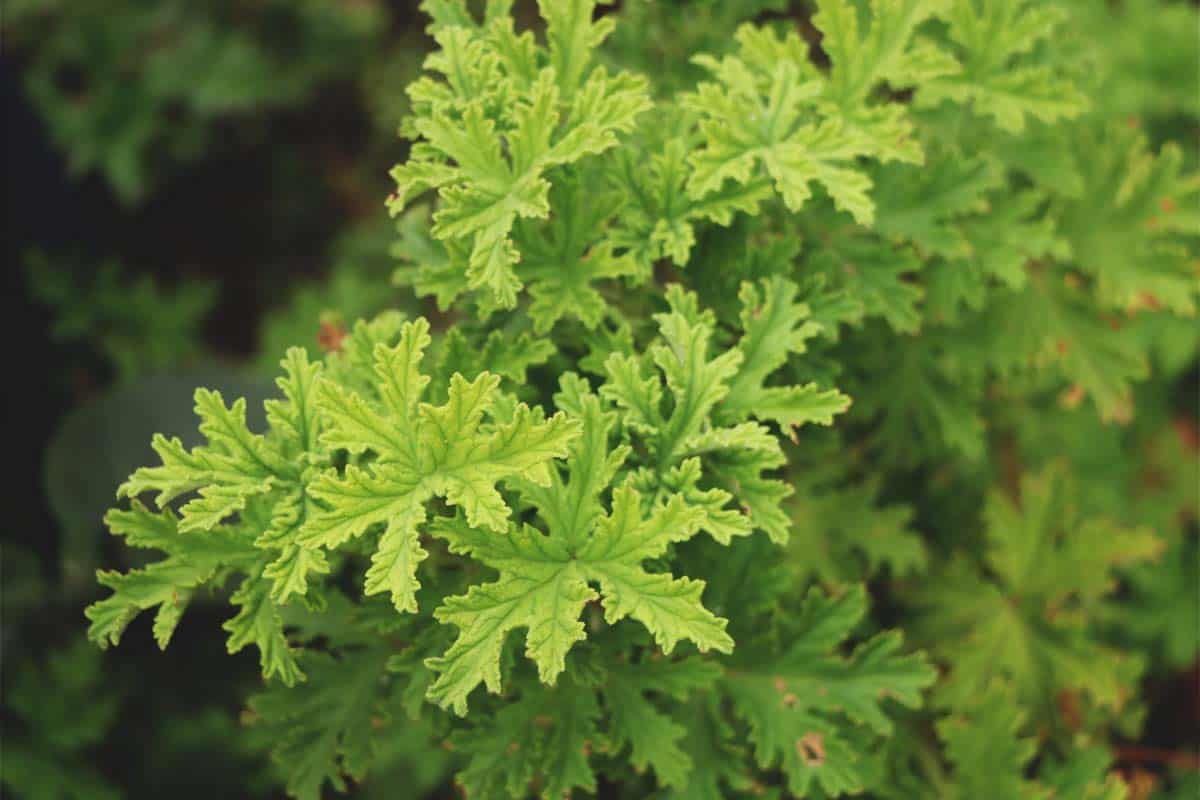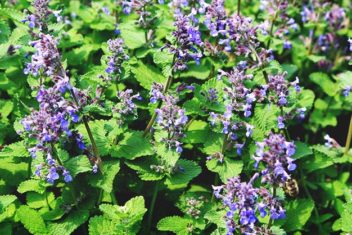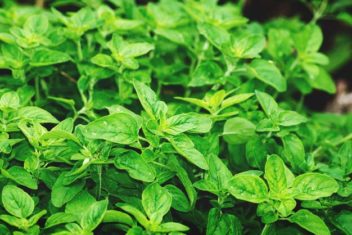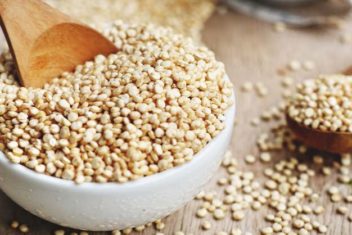Most of us have heard of citronella as a mosquito repellant, but did you know it can be used in soaps and candles as well?
Traditionally cultivated in tropical areas of Asia, citronella grass is a beautiful addition to the home garden that can help keep blood-sucking mosquitos and annoying whiteflies at bay. It can also be used to make citronella essential oil.
Ready to get started? Here’s what you should know to succeed at growing citronella.
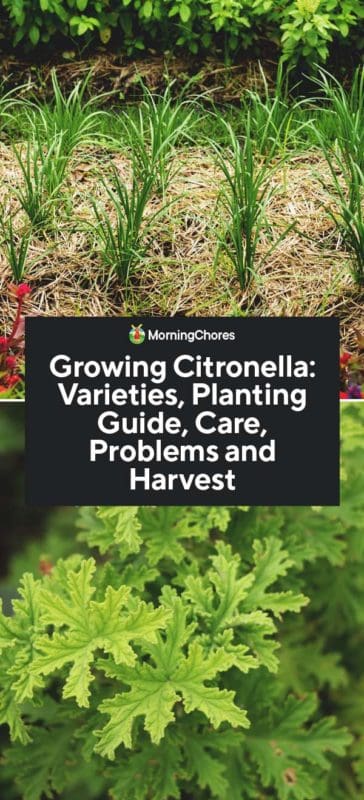
Varieties of Citronella
True citronella plant is a clumping grass similar to lemongrass. It’s a deep green color, often with a pink or purple hue at the base of the leaves.
There is another plant sold as citronella, but it is actually a scented geranium, Pelargonium citrosum.
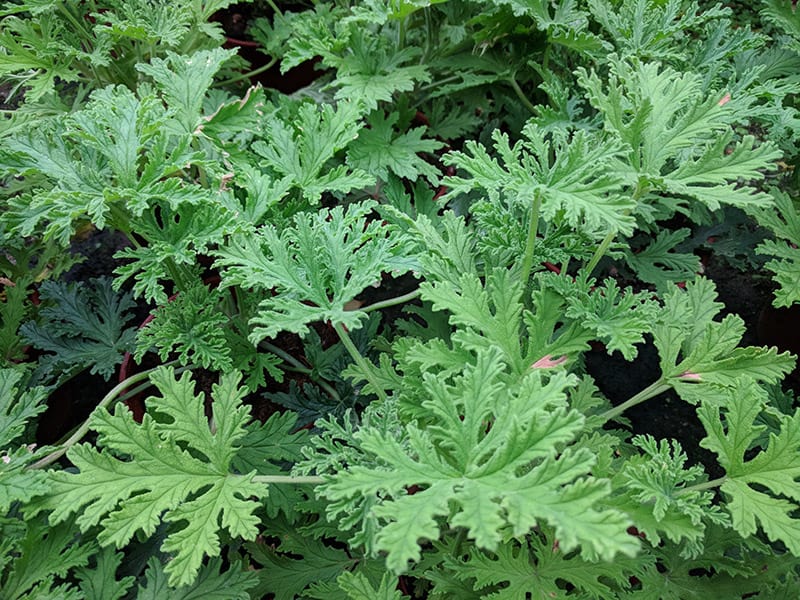
This has broad, serrated leaves and sometimes is sold as “mosquito plant,” but it’s citronella scented only. You can’t use it to make citronella essential oil.
Ceylon Citronella

Ceylon citronella, Cymbopogon nardus, is the variety most often found in home gardens and used to make essential oil. It’s great as an ornamental grass or repelling pests in the garden. It gets about 3 feet tall.
Java Citronella
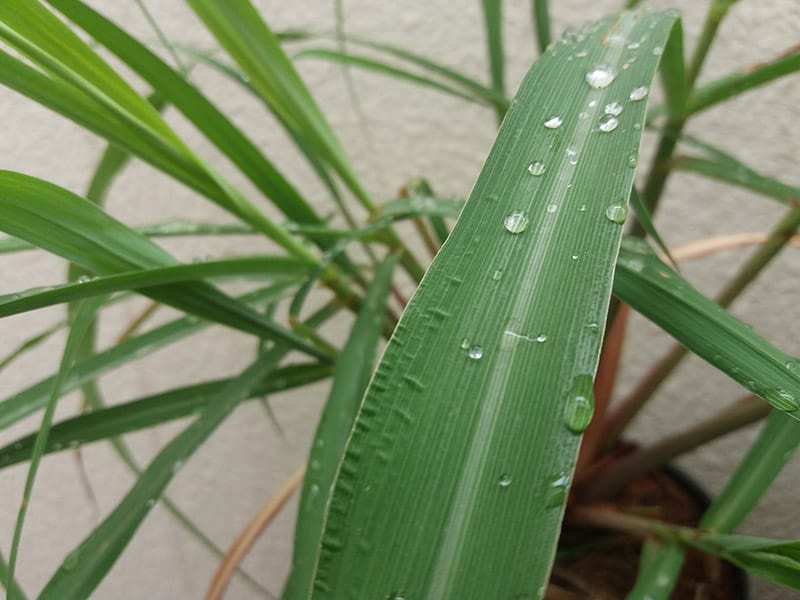
Although Java citronella, Cymbopogon winterianus, probably originated around Sri Lanka as well, at some point, it was made popular in Indonesia.
This variety has broader leaves than Ceylon and grows faster. It gets about 4 feet tall.
West Indian Lemongrass
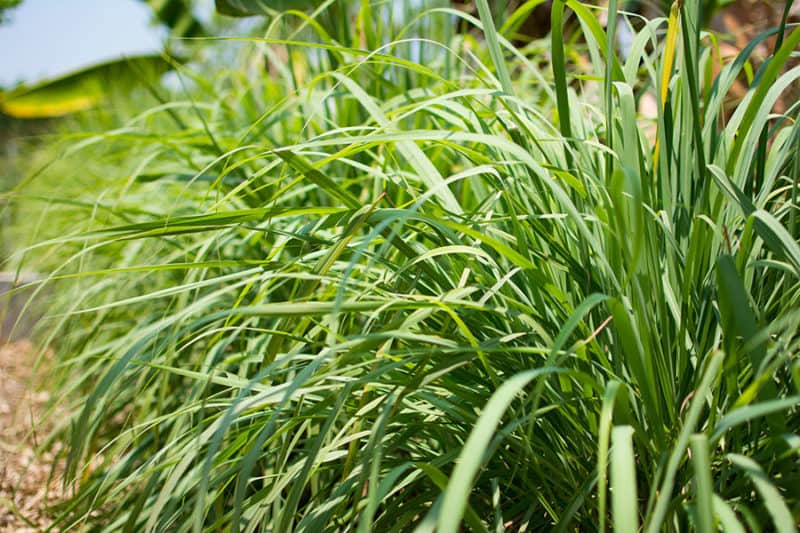
Cymbopogon citratus is a member of the citronella family that we know as lemongrass. It’s is popular in cooking, can also be used to repel mosquitos and for its essential oil. It gets about 4 feet tall.
East Indian Lemon Grass
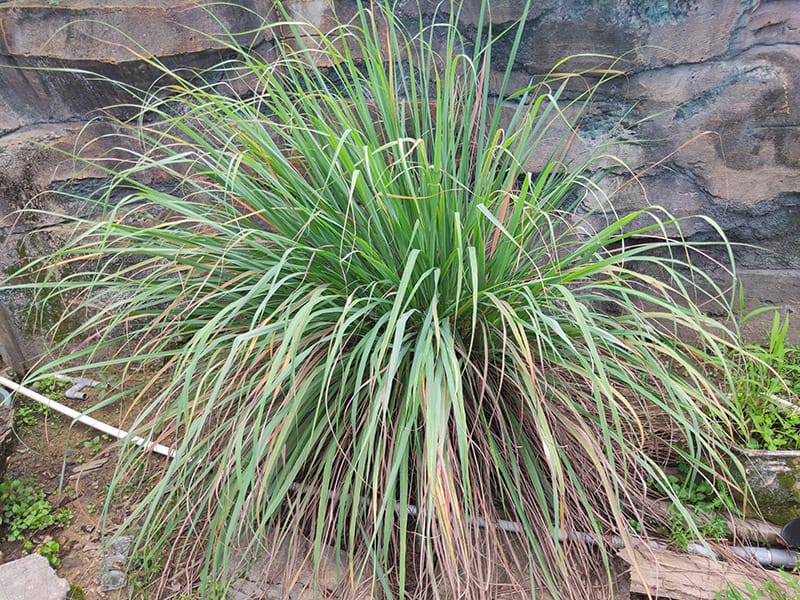
Cymbopogon flexuosus is native to India, Sri Lanka, Burma, and Thailand. This is the lemongrass typically used to flavor food and to add scent to cosmetics. It gets up to 6 feet tall and spreads up to 3 feet.
Palmarosa or Gingergrass
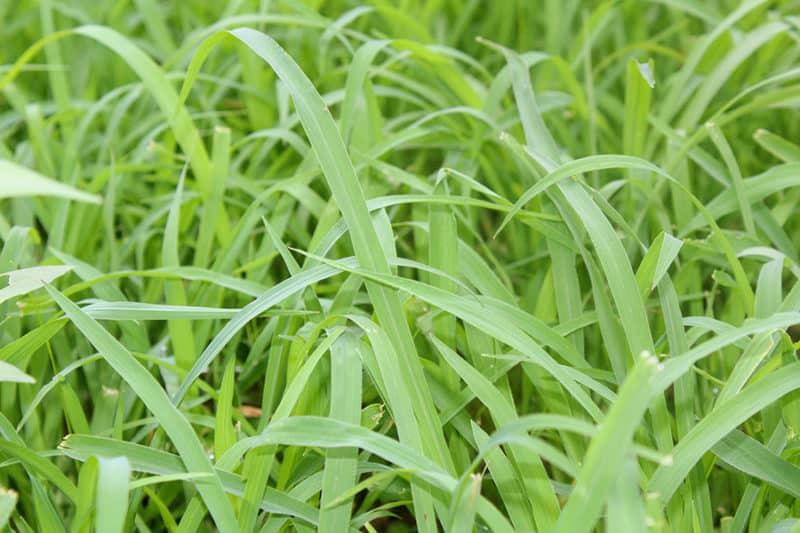
Cymbopogon martini has been gathered in the wild and used for its essential oil since antiquity and is now cultivated for the same reason. There are studies showing some promise for using palmarosa medicinally on the skin.
How to Grow Citronella
Citronella grass is relatively fuss-free. You can grow it as an annual or a perennial if you live in a warmer climate. You can plant citronella by seed, transplant, or root division.
Transplants or root divisions are easiest because the seeds can be finicky.
Water and Sunlight Needs
Citronella grass grows well in zones 9 to 12. It doesn’t like harsh winter conditions. Grow it as an annual in zones 3-8.
Citronella needs full sun to part sun. Provide it with morning sun and afternoon shade. Six hours of sun a day is optimal.
A loamy soil pH of 6.5 is best. Add plenty of organic matter to the soil before planting.
Citronella needs plenty of water and nutrients but likes well-draining soil to avoid wet roots. If you live in a wet climate, plant on a ridge so the soil naturally drains.
When to Plant
Plant outside in spring after the last frost and the ground has warmed. You can grow citronella inside in pots anytime.
Container Planting
Citronella grows well in pots. It’s easy to move the plant around with the sun as the seasons change and to move inside if you live in cooler areas.
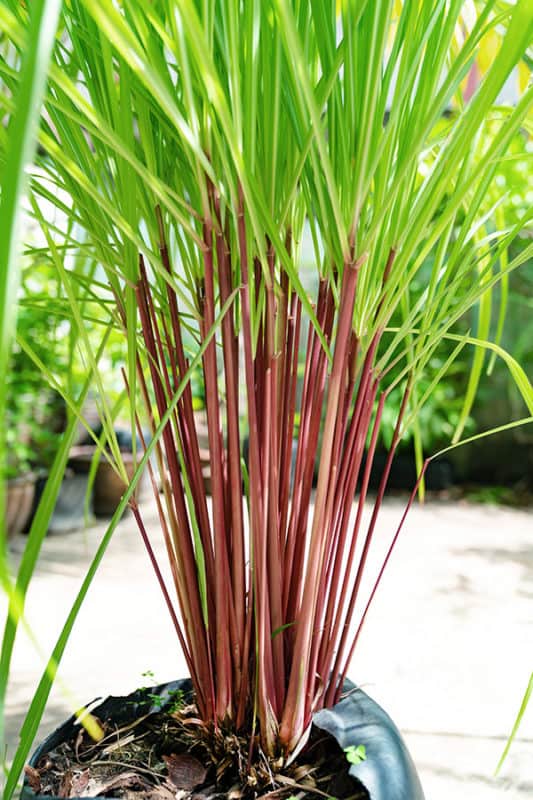
Citronella grass grows up to 6 feet tall depending on the variety, so the container helps keep it to a more manageable size. Just cut it back to your desired height and width.
Use a potting mix that drains well and a container at least 12 inches in diameter. Feed monthly with a well balanced liquid fertilizer and don’t allow the soil to dry out.
Planting Seed
Citronella grass seeds can be hard to come by locally, so you might need to shop around online
If you’re lucky enough to get some seed, plant in small pots with seed raising mix and keep the pot at a constant temperature of about 64°F, using a heat mat if necessary.
Keep the mix moist at all times and, once germinated and at least three inches tall, transfer the plants to your garden or permanent container.
Propagating From Division
In late fall, trim back all leaves and then dig the citronella plant.
To do this, carefully dig down and expose the roots of the plant. Gently loosen the dirt from around the roots and lift the entire thing out of the soil.
Cut the roots into equal pieces and plant in pots. Plant the division in a new spot in the garden or in a container.
Planting Transplants
Citronella grass can grow to 6 feet in the right conditions and 3 feet wide, so they need a big spot in the garden.
Work in plenty of organic matter into the soil and dig in a well-balanced fertilizer a week before planting or transplanting.
Dig a hole twice the width of the root system. Put the plant in place and fill in around the roots and press firmly. Water well and keep moist for the first few months.
Spacing
Plant citronella grass 24 inches apart to give them room to spread. While citronella isn’t invasive because it doesn’t reproduce through runners as some grasses can, it does spread out readily and can crowd out other plants.
Caring for Citronella Grass
Once you got it in the ground, citronella isn’t too demanding. They need regular feeding and water and some pruning to keep them in check.
Citronellas are hungry plants. Use an all-purpose fertilizer that’s high in nitrogen. I do this at the beginning of spring for established plants.
Citronella plants need regular watering in well-draining soil. Allow the first inch of soil to dry out before providing more water.
Citronella plants get big and bushy, but the only pruning required is removing the leaves as they yellow and die off. This gives the plant the ability to put energy into the remaining leaves, much like when you deadhead flowers.
However, if you want to keep the plant in check, trim it back regularly.
Companion Planting for Citronella Grass
These herbs and small flowering plants make a good companion for your citronella plants:
- Lavender
- Marigold
- Catnip
- Lemon Balm
- Bee Balm
- Thyme
- Rosemary
- Zinnia
- Shrub Rose
- Hibiscus
- Vinca
- Cannabis
Don’t plant citronella with rue.
Common Problems and Solutions for Growing Citronella Grass
You could be forgiven for thinking citronella plants wouldn’t have pests and diseases given the uses for citronella oil, but unfortunately, there are a few things to watch out for.
Leaf Blight
Grasses are particularly susceptible to leaf blight and citronella grass is no exception. Discoloration of the lower leaves, then to the upper leaves will be quick in humid conditions.
Foliage death occurs and the plant overall becomes stunted and unhealthy.
There are many antifungal sprays, but I prefer organic neem oil. Spray every four weeks for three days in a row.
Anthracnose
Dark lesions appear on young leaves especially after prolonged rain in humid conditions. Partial leaf death occurs, causing stunted growth of the citronella grass.
In bad cases, all leaves are infected and the plant is likely to die.
To prevent it, ensure good airflow between plants and at least 6 hours of sunshine on the citronella grass. Clean up all the debris in your garden in the fall to prevent it from spreading.
Use a copper-based fungicide spray as the new leaves emerge as a preventative if you know this disease is a problem in your area.
Spider Mites
Spider mites live on the undersides of plants and punch holes in the leaves to feed. They are tiny and you’re more likely to see their webbing than the mites themselves.
In big numbers, spider mites can kill a plant.
If the infestation isn’t bad, give the citronella grass leaves a spray of water to knock the mites off. Do this every day for a week. Trim away any badly infested leaves.
If you really struggle with these pests, use a good quality sulfur spray each winter and neem oil in the spring, summer, and fall. Just remember that using chemicals can kill off the good insects in your garden as well.
Harvesting Citronella
I use my citronella plants as ornamentals, but you can harvest from them up to three times a year for oil extraction.
It’s an herbalist’s dream and can be used in preparations for antibacterial, antimicrobial, antifungal, and anti-inflammatory products.
After 7 to 8 months when the plant is fully grown, you can remove the leaves by cutting as close to the base as possible.
If you want to, you can harvest again in three to four months.
Make Your Own Citronella Essential Oil
To make your own essential oil, cut leaves and dry them in a dehydrator or leave them in the sun in a covered area with plenty of air circulation.
Once dry, take 4 ounces in weight of the leaves and place them in a clean jar. Cover in isopropyl alcohol.
Leave the mixture for three days before straining and reserving the liquid. It’s as easy as that.
Remember, citronella essential oil shouldn’t be used internally.
If you like growing citronella grass, try lemongrass as well.
